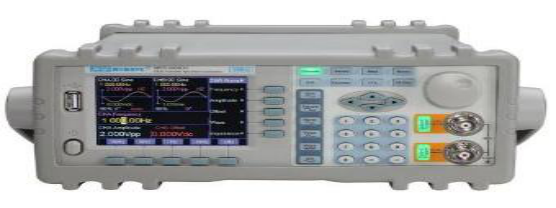What are the main indicators of the signal generator?
Main indicators of the signal generator
1, amplitude characteristics
Amplitude characteristics include output amplitude range, amplitude accuracy, amplitude resolution, and the like.
2, modulation performance
The high-frequency signal generator can also output amplitude-modulated waves and frequency-modulated waves while outputting sine waves, and some also have functions such as phase modulation and pulse modulation. When the modulated signal is generated internally by the signal generator, it is called internal modulation. When the modulated signal is provided by an external circuit or a low frequency signal generator, it is called external modulation.
The modulation characteristics of the high frequency signal generator include modulation mode, modulation frequency, modulation coefficient, and modulation linearity.
3. Spectrum purity
There are many indicators related to spectrum purity, and phase noise, residual frequency modulation and spurs are more important.
The evaluation of the quality of the continuous wave signal is mainly carried out in the frequency domain, and the spurs in the frequency domain contain continuous and discrete components, which all correspond to distortion in the time domain. The continuous noise sideband is called phase noise, and the discrete spurs are divided into harmonics and clutter according to their frequency relationship with the fundamental wave.

Main indicators of ordinary function signal generator
1, bandwidth (output frequency range)
The bandwidth of the instrument refers to the analog bandwidth, regardless of the sampling rate, etc. The bandwidth of the signal source refers to the range of the output frequency of the signal, and generally speaking, the frequency range of the sine wave and square wave output from the signal source is inconsistent, for example, a function occurs. The frequency range in which the sine wave is generated is 1 mHz to 240 MHz, and the frequency range of the output square wave is 1 mHz to 120 MHz.
2,requency accuracy
Deviation between Frequency Value and Truth Value Displayed by Signal Source is usually expressed by relative error. The frequency accuracy of the low-end signal source is only 1%, and the frequency accuracy of the internal high-stability crystal oscillator can reach 108-1010. For example, a signal source has a frequency accuracy of 1 ppm.
3,requency (timing) resolution
The frequency resolution, which is the minimum adjustable frequency resolution, is the minimum time increment that can be used when creating a waveform.
4, the output impedance
The output impedance of the signal source is the equivalent impedance of the signal source as seen from the output. For example, the output impedance of a low-frequency signal generator is typically 600Ω, the high-frequency signal generator is typically only 50Ω, and the TV signal generator is typically 75Ω.
5, frequency stability
The frequency stability refers to the magnitude of the deviation of the output frequency of the signal generator relative to the set reading within a specified time when the external environment is constant. Frequency stability is generally classified into long-term frequency stability (long-stable) and short-term frequency stability (short-stable). Among them, the short-term frequency stability refers to the maximum change of the signal frequency within 15 minutes after preheating; long-term frequency stability refers to the maximum change of signal frequency in any three hours after the signal source has been preheated.
6, the output level range

